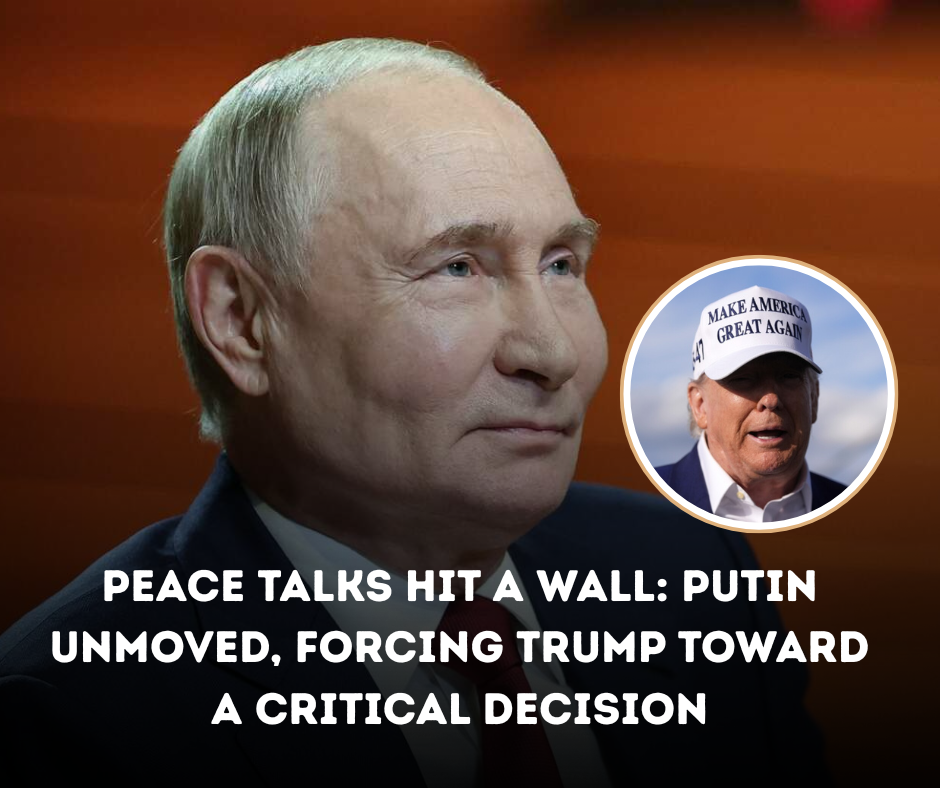After months of diplomatic overtures and backchannel negotiations, peace talks over the war in Ukraine have hit a decisive wall. Russian President Vladimir Putin has refused to make any meaningful concessions, holding firm to Moscow’s territorial claims and strategic red lines. With negotiations now stalled, the pressure is rapidly mounting on President Donald Trump to respond—and the world is watching.
Putin Stands His Ground
Despite repeated efforts by international mediators and U.S. envoys, Putin has shown no signs of retreat. According to senior sources familiar with the talks, the Kremlin has maintained a hardline stance on several key issues, including the status of occupied Ukrainian regions and demands for Western security guarantees. Any expectations that Moscow might soften its position have now been effectively dashed.
Putin’s message has been consistent: Russia will not negotiate from a position of perceived weakness, nor will it withdraw from territories it now considers vital to its national interest. That message has left little room for compromise—and even less for optimism.
Trump’s Options Narrowing
With diplomacy faltering, President Trump now faces a critical choice. Having long promised to secure peace through strength and strategic leverage, he must now decide how far the United States is willing to go to reassert leadership in the region.
Sources within the White House suggest that several options are on the table, ranging from intensified economic sanctions and military aid to Ukraine, to potential direct diplomatic pressure on allied nations to further isolate Moscow. A more aggressive posture could involve the repositioning of U.S. forces in Eastern Europe or the introduction of new missile defense systems to deter further Russian escalation.
“President Trump has made it clear: peace is the goal, but America will not be walked over,” said a senior administration official. “If Putin refuses to engage in serious dialogue, then the consequences will be significant—and swift.”
Ukraine Caught in the Crossfire
Meanwhile, the people of Ukraine continue to bear the brunt of the geopolitical impasse. With fighting still active in contested areas and no resolution in sight, humanitarian conditions remain dire. The failure of peace talks has also dashed hopes for a ceasefire, meaning more instability in the months ahead.
Ukrainian President Volodymyr Zelensky has welcomed continued U.S. support but has urged Washington to take stronger action to pressure Moscow. “We need more than words—we need resolve,” Zelensky said in a recent address. “Our survival depends on the decisions made in Washington, Brussels, and beyond.”
A Global Turning Point
The breakdown of peace talks marks a turning point not only for the war in Ukraine but for global stability. For President Trump, this moment presents both a challenge and an opportunity—to reaffirm American strength on the world stage and demonstrate that U.S. leadership can shape the outcome of even the most entrenched conflicts.
The question now is not just how the U.S. will respond—but when. With Putin unmoved and diplomacy at a standstill, the next move belongs to President Trump. And it could redefine the balance of power for years to come.

Leave a Reply